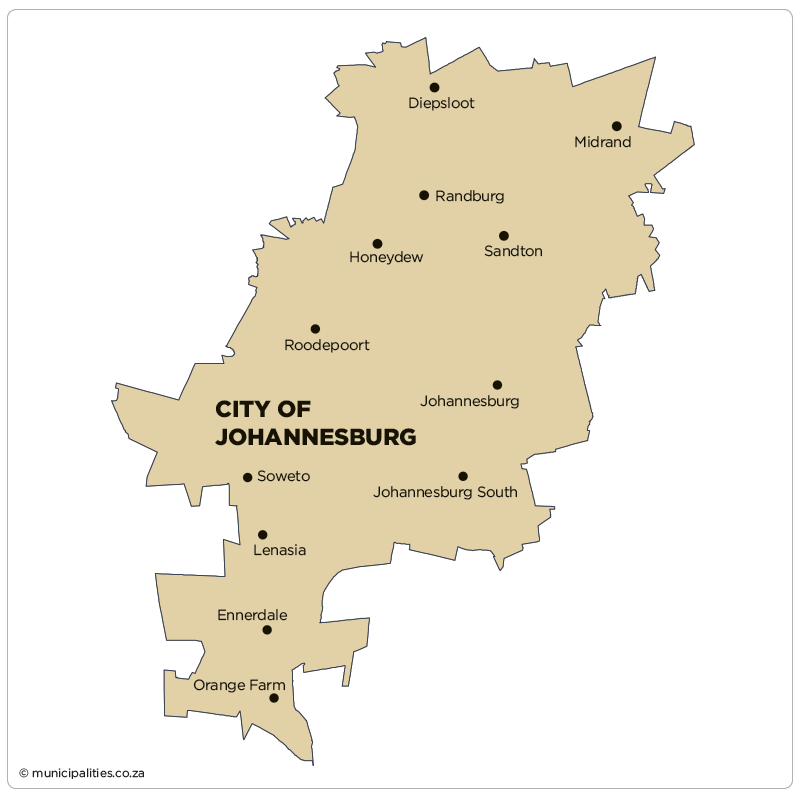
Geography, History & Economy
MDB code: JHB
Description: The City of Johannesburg Metropolitan Municipality is located in the Gauteng Province. Johannesburg is the most advanced commercial city in Africa and the engine room of the South African and regional economy. It is a city with a unique, African character, world-class infrastructure in the fields of telecommunications, transportation, water and power, and with globally-competitive health care and educational facilities. However, the city is also one of contrasts – home to both wealthy and poor, residents and refugees, global corporations and emerging enterprises.
The demographics of Johannesburg indicate a large and ethnically diverse metropolitan area. As the largest city in South Africa, its population is defined by a long history of local and international migration. Johannesburg is home to almost five million people, accounting for about 36% of Gauteng’s population and 8% of the national population.
Over the last decade the city has been growing. A key contributor to this is that the city continues to attract people from other provinces, and internationally, who are looking for better economic opportunities and quality of life. The population pyramid indicates that the city’s population is predominantly young. This can be attributed to migration from other parts of the country as young people look for jobs. Johannesburg is considered the economic hub of South Africa and is often the first choice of destination by job seekers across the country.
Area: 1 645km²
Cities/Towns: Alexandra, Diepkloof, Diepsloot, Ennerdale, Johannesburg, Johannesburg South, Lawley, Lenasia, Lenasia South, Meadowlands East, Meadowlands West, Midrand, Orange Farm, Pimville, Randburg, Roodepoort, Sandton, Soweto
Main Economic Sectors: Finance and business services, community services, manufacturing, trade (collectively 82%)
